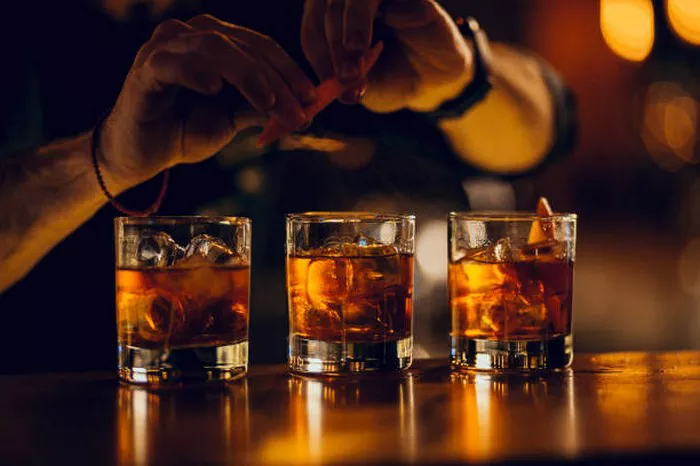Moonshine vodka, often shrouded in mystery and folklore, has a storied history that dates back to the early days of American distillation. This clandestine spirit, also known simply as “moonshine,” conjures images of hidden stills, bootleggers, and Prohibition-era rebellion. In this article, we will delve into the world of moonshine vodka, exploring its origins, production methods, cultural significance, and its resurgence in the realm of craft distillation.
Defining Moonshine Vodka
Moonshine vodka, or moonshine for short, refers to a homemade or illicitly produced distilled spirit, typically with a high alcohol content. While moonshine can be made from a variety of grains or fruits, it is often associated with corn-based spirits. The term “moonshine” itself alludes to the illicit nature of the production, as these spirits were often distilled “by the light of the moon” to avoid detection by authorities.
Moonshine’s Origins and Prohibition-Era Roots
The roots of moonshine vodka in the United States can be traced back to the early settlers who brought their distillation traditions with them from Europe. Homemade distillation was a common practice for producing spirits in colonial America, primarily due to a lack of regulated distilleries. However, it was during the era of Prohibition (1920-1933) that moonshine gained widespread notoriety.
Prohibition, which banned the sale, production, and transportation of alcoholic beverages in the United States, gave rise to an underground industry of bootleggers and illicit distillers. Moonshine production flourished in hidden stills throughout rural areas, as people sought to satisfy their thirst for spirits despite the ban.
During this period, moonshiners developed a reputation for both resourcefulness and defiance. They used homemade stills and often operated at night to avoid detection by law enforcement. The quality and safety of moonshine varied widely, with some being expertly crafted while others were potentially hazardous due to poor distillation practices.
Production Methods
The production of moonshine vodka involves a series of steps that are similar to legal distillation processes but carried out clandestinely. While the specific methods and recipes can vary, the fundamental steps include:
Mash Preparation: Moonshine typically starts with a grain-based mash that includes ingredients like corn, barley, or wheat. Sugar and water are added to create a fermentable mixture.
Fermentation: Yeast is introduced to the mash to ferment the sugars, converting them into alcohol. This process can take several days and produces a liquid known as “wash.”
Distillation: The wash is heated in a still, typically a makeshift copper or stainless steel apparatus, to separate the alcohol from the water and other impurities. The alcohol vapor is collected and condensed back into liquid form.
Fractional Distillation: Some moonshiners employ fractional distillation to increase the purity and alcohol content of the spirit. This involves multiple distillation cycles to refine the product.
Dilution and Bottling: After distillation, the moonshine may be diluted to the desired alcohol content with water and then bottled. In some cases, it is sold in unaged, clear form, while others may be aged briefly in wooden barrels for added flavor.
Packaging: Moonshine is often bottled in clear containers, typically mason jars, which are sealed with caps or corks. The clear bottles allow consumers to inspect the color and clarity of the spirit.
Cultural Significance
Moonshine vodka holds a unique and enduring place in American culture. It is more than just a spirit; it represents a connection to history, tradition, and the pioneering spirit of those who crafted it during Prohibition. Here are some aspects of its cultural significance:
Prohibition-Era Rebellion: Moonshine symbolizes the resilience and resourcefulness of those who defied Prohibition laws to satisfy their thirst for alcohol. It became a symbol of rebellion against government regulations.
Folklore and Legends: Moonshine has inspired countless stories, songs, and legends, often featuring colorful characters like “moonshiners” and “revenuers” (tax agents). These tales contribute to its enduring mystique.
Classic Moonshine Cocktails
Moonshine’s versatility in cocktails has made it a favorite among mixologists and cocktail enthusiasts. Here are some classic and contemporary cocktails that feature moonshine:
Moonshine Sour: Similar to a classic Whiskey Sour, this cocktail combines moonshine, fresh lemon juice, simple syrup, and a splash of club soda for effervescence.
Apple Pie Moonshine: This flavorful concoction includes moonshine, apple juice or cider, brown sugar, and cinnamon. It’s reminiscent of homemade apple pie in liquid form.
Moonshine Mojito: A twist on the classic Mojito, this version uses moonshine instead of rum, along with fresh mint leaves, lime juice, sugar, and soda water.
Honey Peach Moonshine Smash: This refreshing cocktail combines moonshine, ripe peaches, honey, and a dash of bitters, creating a sweet and fruity libation.
Maple Bacon Moonshine Old Fashioned: A savory take on the Old Fashioned, this cocktail incorporates moonshine, maple syrup, and a strip of crispy bacon for a smoky, rich flavor.
Berry Moonshine Fizz: Moonshine, mixed berry puree, lemon juice, and club soda come together in this vibrant and fruity fizz.
Moonshine Manhattan: A variation of the classic Manhattan, this cocktail features moonshine, sweet vermouth, and a dash of bitters, garnished with a maraschino cherry.
Conclusion: The Ongoing Saga of Moonshine Vodka
Moonshine vodka, with its history of rebellion, cultural significance, and recent resurgence, continues to capture the imagination of spirits enthusiasts and cocktail aficionados alike. It has evolved from its illicit past to become a celebrated part of the craft distillery movement, finding its place in modern cocktail culture.


